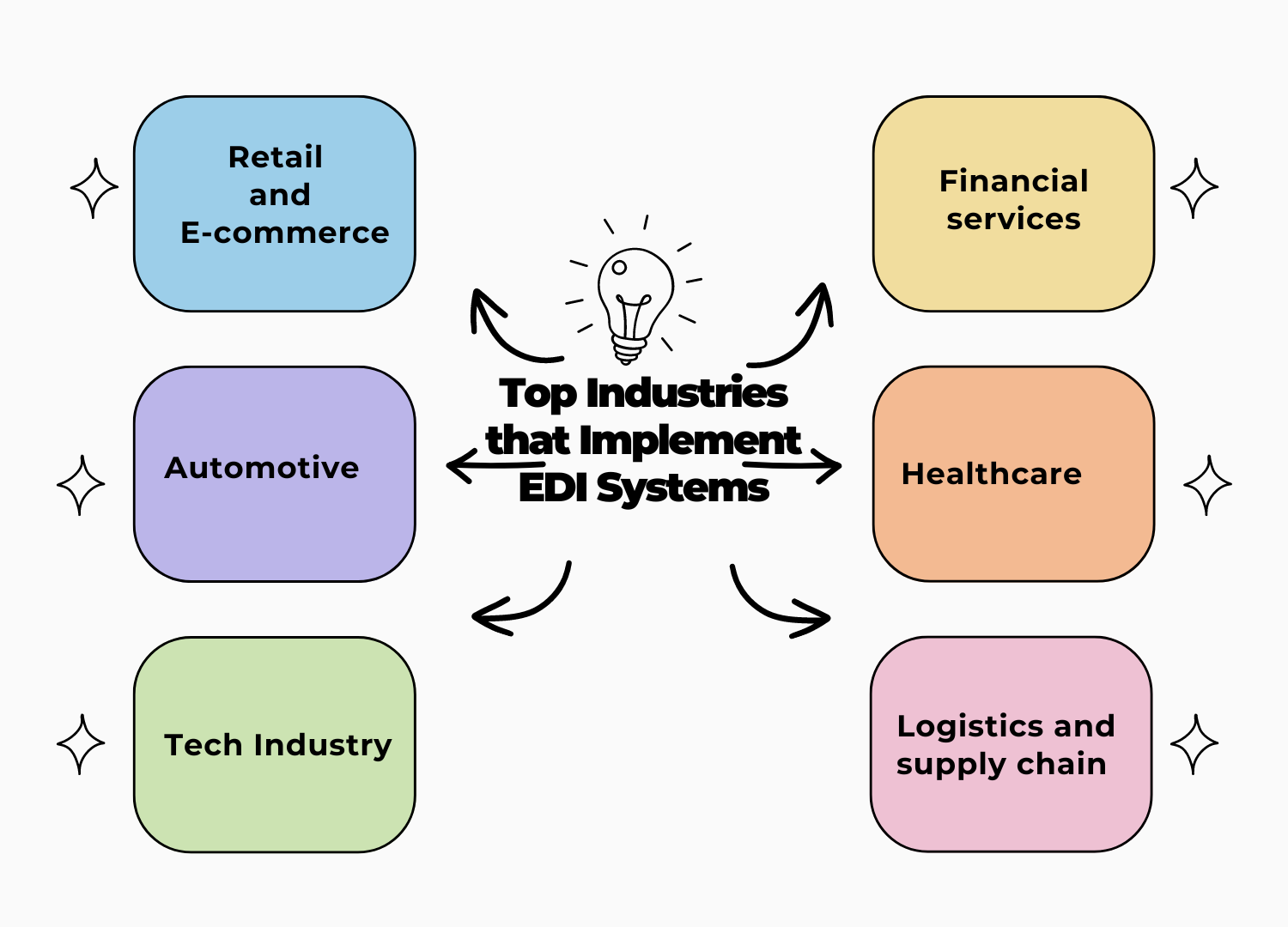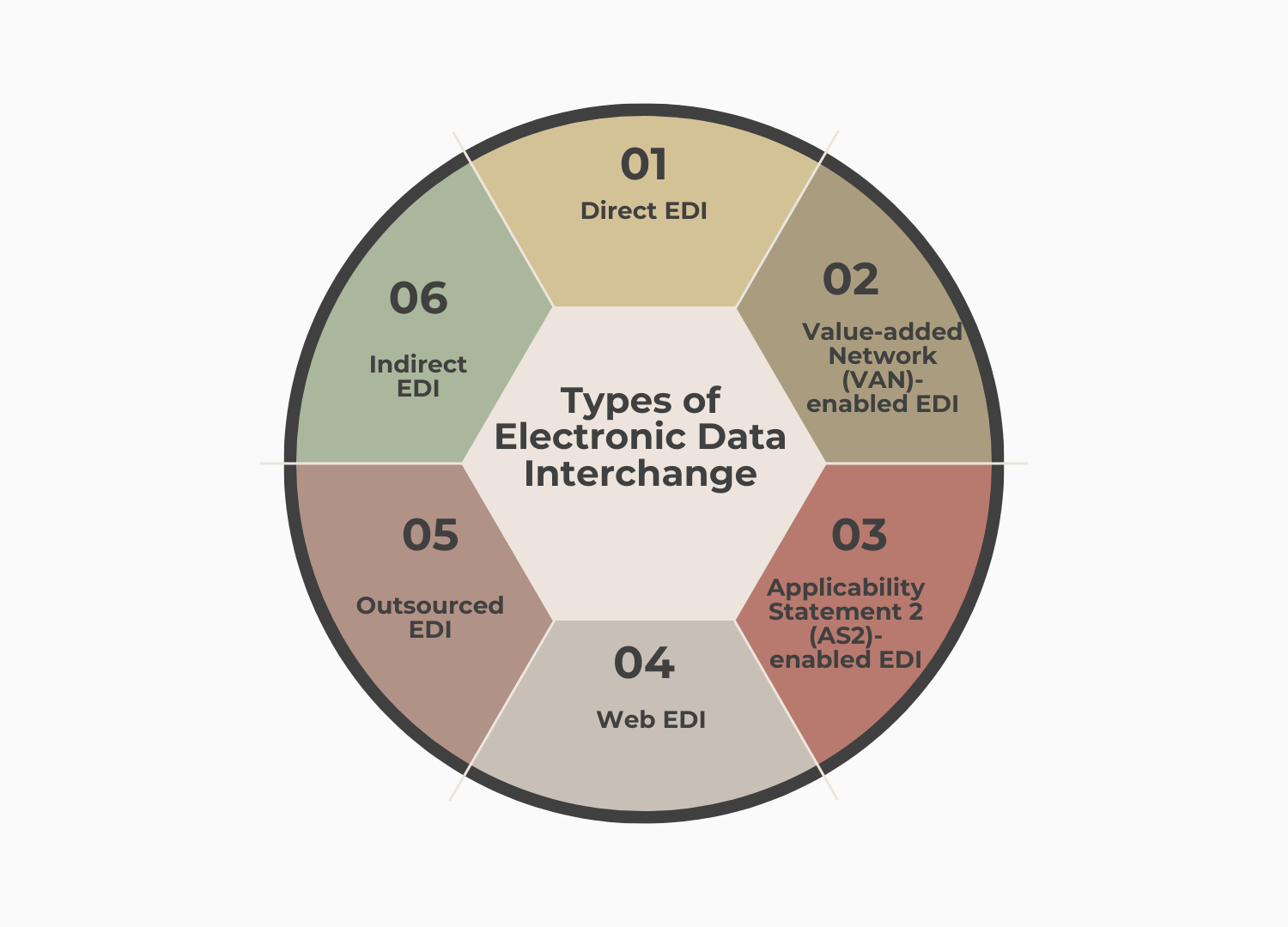You’re here because you know the fundamentals of Electronic Data Interchange or EDI. How it can simplify and expedite interactions between trading partners and within the company. The next steps which include choosing the right EDI solution provider can be difficult. There are many options to consider for determining which type of EDI solution is ideal for your company. An EDI provider is a company that provides organizations with EDI services and/or software, usually in the form of managed or self-service packages. Even though many EDI service providers may focus on certain features or market niches, they all enable businesses to send standardized data between their manufacturers, suppliers, eCommerce sites, and other trading partners.
With a compound annual growth rate of 12.5%, the size of the global market for Electronic Data Interchange (EDI) software is expected to increase from $1.98 billion in 2023 to $4.52 billion by 2030. The top EDI providers demonstrate that EDI services go beyond simple data formatting. The ideal EDI provider will show how EDI procedures can be a major source of revenue generation and help clients realize the value of contemporary electronic data interchange services. It will also provide agility, visibility, and transparency to enable governance, onboarding, management, and visibility processes.
Simplify Your B2B Transactions & Modernize Your Business With EDI
What are EDI Services?
Businesses use EDI software to send, receive, and translate data in a digital, standardized format between corporate systems. This entails establishing connections with essential business systems, such as accounting software, WMS, ERPs, CMSs, and eCommerce platforms. With their ability to integrate into other workflows for holistic processing, visibility, and corporate efficiency, modern EDI services are proving to be more technologically convenient.
Standardized EDI documents aid in ensuring the transmission and readability of vital information between your business, trading partners, clients, and other participants in your digital ecosystem, whether you are sending a purchase order to a supplier to purchase goods for your store or receiving an invoice for services from a vendor or partner. However, not all EDI support services are made equal, and businesses have a wide range to select from.
10 Key Questions for your EDI supplier
It can be quite difficult to choose the top EDI service providers. Particularly for companies who are deploying EDI for the first time. Here are a few questions that you should ask your EDI service provider.
1. Which integrations and connections are supported?
The solution has a large number of possible connections. Therefore, you must assess the kind of connections your company requires and confirm if the EDI Solution supplier can assist you in obtaining such. The type of integrations you require between your ERP, business systems, and EDI must then be taken into account. Consider whether your ERP system has to be updated, particularly if you’re considering an integrated solution.
Rather than having separate technological islands that must be connected to other software, we advise implementing an integrated solution within the ERP, which is simpler to monitor and maintain. Once you’ve determined this, find out if the solution is integrated with your ERP or not, and if it is housed outside of it.
2. Which kind of EDI solution—cloud-based or on-premise—do you prefer?
In addition to the infrastructure needed to support the deployment, having EDI specialists on staff is necessary for setting up on-premise EDI. As a result, companies with few trading partners—ideally, those who use the same EDI standards and formats—benefit from this type of deployment.
When using cloud-based EDI, use an external network for the procedure. This type of EDI setup is suitable for companies with several trade partner connections in different formats and standards, enterprises seeking greater scalability, and companies without EDI experience or internal resources to handle EDI transactions.
After making a decision, you must ascertain whether the solution is appropriate for you by consulting the list of EDI service providers. Regardless of the route you take, be sure the solution can be integrated with both your present and future infrastructure.
3. Which pricing structure suits you the best?
In most cases, price is the decisive element for enterprises. The majority of EDI providers provide three pricing options, including monthly, annual, and pay-as-you-go. For internal use, the majority of EDI service providers charge an annual fee if you choose to use an embedded solution. But, you will have to pay for each transaction if you choose to use EDI-managed services, which provide everything from EDI mapping to translation.
Talk about any hidden or extra fees, such as character restrictions, free VAN service, EDI mapping, or record lengths, when you do talk about price with your EDI supplier. Consider looking at all-inclusive solutions like EDI 834 if you are working with a lot of data exchange.
Therefore, you must first determine the volume of your data transmission to limit down cost. In this manner, you can choose the pricing plan that most closely matches your company’s needs.

4. Which EDI solutions are accessible to me?
Essentially, there are three different kinds of EDI solutions: web-based EDI, EDI service bureaus, and EDI software solutions. EDI software provides the greatest degree of flexibility and control and is installed directly onto a computer owned by your business. Additionally, you may be able to combine EDI software with back-office systems, which will increase the effectiveness of business processes. The EDI software on your end and the EDI support of your business partner exchange EDI documents directly. This “point-to-point” mode of communication offers a safe way to communicate with business partners while also minimizing errors and delays.
Web-EDI requires an internet connection to be used because its software is hosted online. Manual EDI data entry is necessary for web-based EDI, which is an interactive procedure. You have less control over day-to-day operations and little chance for integration using this strategy. There is virtually little opportunity for EDI process customization when using a web-based Direct EDI because the data is interactive. When doing your EDI operations, EDI services operate as EDI contractors and usually employ a pay-as-you-go model. The least amount of control over your daily operations and the least amount of possibility for data integration with your company systems are offered by EDI services.
5. Which EDI services are included in the software package?
When your organization grows and the volume of business transactions increases, outdated EDI technology that requires human entry processing becomes less effective. Pre-configured maps in an EDI solution can facilitate data interchange. When an EDI user publishes a packing slip, for instance, the system recognizes the format and processes the appropriate EDI message, sending it to the appropriate trade partner in the background.
As a best practice, find out what formats your business partners are using. Next, you can inquire about the various format types offered with the EDI provider’s solution. It’s also crucial to confirm if the vendor will provide translation services for papers you receive during imports or exports.
6. How much downtime and customer service should you anticipate?
It can be difficult for you to send or receive crucial documents if the EDI solution is unavailable, thus it is crucial to assess this factor. For instance, you might receive a sales order and need to send out an agreement, but your firm might suffer if the consumer doesn’t respond. To ensure you can minimize SLA fines and penalties, make sure your EDI agreement specifies response times to safeguard your organization from downtime.
You most likely have an idea of how much downtime you could handle. However, you do need to verify the backup and procedures that the EDI solution has set up for just such a scenario. Additionally, please specify if your teams are anticipated to provide any support during a shutdown.
24/7 assistance is another essential factor to take into account to guarantee business continuity, particularly if you have international operations operating in several time zones. Additionally, if different formats are used in different parts of the firm, you will require EDI translation services.
7. Is the EDI vendor centered around the customer? Is the solution easy to use?
While requesting a demo from the EDI provider, inquire about the resources that are accessible as well as their procedures for resolving problems that may arise both during and after implementation. Ask the EDI provider whether there are any adjustments that you believe are necessary.
In an automated platform, EDI mapping and data management need to be simple and efficient, saving you time when it comes to manually organizing data. You should find it simple to use the service and add business partners. For example, because the EDI Solutions tutorials make onboarding simple, our clients frequently provide comments on them.
8. Does the EDI provider possess appropriate industry experience?
Because there are established standard formats, EDI has been able to significantly improve communication efficiency across a range of businesses. Additionally, the standards in the automobile sector differ from those in the food or retail industries. An EDI provider with experience in your sector will be familiar with the format and will already know people in your industry who can link you with trading partners.
9. Can you develop with the EDI solution?
An effective EDI system should make it simple for you to expand or add new EDI business relationships with suppliers, customers, and warehouses. Therefore, the solution should be flexible enough to adapt to changes in case you decide to scale your firm. Additionally, the EDI provider can assist you in getting started with EDI quickly once you adopt the system by providing an expedited onboarding procedure for all of your customers and vendors.
10. Are there any further services you need?
Aside from the EDI solution, what services does your EDI supplier offer? For instance, are data mapping, EDI translation, and interaction with your ERP provider, if necessary? It can be annoying and time-consuming to have to visit several vendors for EDI.
As your company grows, will your EDI in small business be able to assist you in the future if you decide you need a new service, such as master data management, and will the software be simple to interface with those add-on solutions?

Key Features of EDI Service Provider
There are several characteristics you should consider when choosing EDI service providers to make sure you are working with an EDI consulting that offers the flexibility and tools necessary for the success of your enterprise.
1. Compatibility with Any Format or Standard
The ability of your EDI vendor to support any standards or formats that you require—or may require—is crucial. This entails supporting non-EDI formats including XML, CSV, and JSON files in addition to adhering to ANSI X12, EDIFACT, and Tradacoms standards to assist your clients and partners in any manner they choose to communicate. A most important characteristic of modernized EDI services is the ability to translate and orchestrate any data, regardless of format.
2. Business Process Automation
Does anyone work for you whose primary responsibility is entering orders by hand? Too many businesses do this, and scaling up or down during busy times or as you expand means adding more staff to handle human data entry. And it is not a scalable method. Employees who work for firms that use legacy, piecemeal, or outmoded EDI technology are prevented from concentrating on their primary business goals by having to spend endless hours on manual chores. With the help of contemporary integration technology, business process automation is supported, and flawless B2B communication and EDI order processing are made possible. By employing pre-configured EDI maps, your EDI services ought to be facilitating the order-to-cash process rather than slowing it down.
-
Complete Seeing
It is very beneficial to have visibility into how your EDI procedures are being carried out and to know when to take action about problems and unsuccessful transfers. However, knowing the demand for your products and services—including which trading partners are most profitable and when and how they place orders—will help you gain a deeper knowledge of your crucial ecosystem ties. Point-to-point, custom-coded B2B solutions lead to data silos that lack thorough governance and transparency. For business and technical users to obtain customer insight and intelligence and make better business decisions, EDI service providers must offer dashboards.
- Quick Onboarding of Trading Partners
Making your business easier to do business with is one advantage of implementing EDI. The first exchanges you have with someone, be it a consumer or a commercial partner, need to be excellent to establish the tone for the relationship. Therefore, having the appropriate technology will speed up the process of becoming an EDI trading partner because it expedites the data transfer and configuration processes and automates workflows for creating maps to provide speedier interaction. Better EDI services, faster speed to value, and enhanced trust as a genuine business partner are the outcomes.
-
Reduced SLA Penalties and Fines
Inexpensive chargebacks and other financial penalties may result from missing customer SLAs and growing EDI compliance infractions. Maintaining a positive working relationship with each member of your ecosystem depends on the dependability of EDI in industries. Maybe the system doesn’t send acknowledgment papers or throws ASN problems regularly. These errors frequently necessitate manual intervention, which slows down the process even more. When an expected document is delayed, top third-party EDI service providers will remove these problems and send out alerts and notifications for events as well as non-events. By doing this, operational delays and other mistakes that result in unhappy customers and expensive SLA fines are decreased.
Let us Handle Your EDI
Conclusion
The modern enterprise requires a blend of technology and business process improvement, which EDI integration with A3Logics delivers. To swiftly share data with other systems and applications, our data transformation capabilities leverage an EDI translator that can accept and translate EDI and any other data type. This speeds up and automates B2B communications that are vital to your business’s profitability. Purchasing from a provider with strong support guarantees a seamless setup, reduces interruptions, and equips your staff to use the EDI solution efficiently.
Remember that selecting the top EDI service providers is an important choice. You will be able to choose the provider that best fits your long-term business objectives and unique requirements by posing these extra queries in addition to the ones that are covered in this blog post.
An expert EDI supplier is unmatched, and their knowledge can result in substantial cost savings, quicker business partner onboarding, and increased peace of mind for the entire company.
FAQs
Who is an EDI service provider?
Any business that offers EDI services or software is an EDI provider. Certain EDI suppliers, such as EDI Service Bureaus and EDI VANs, focus primarily on services. Moreover, suppliers could provide EDI software on their own or in conjunction with other services.
Which network utilizes EDI?
The Value Added Network, or EDI VAN, is still useful for the great majority of EDI transactions. Because EDI VAN providers may offer value-added services, the EDI VAN model remains the favored option even with the rise of some simple, low-cost techniques like Web EDI or EDI via AS2.
Who sends EDI?
Instead of utilizing paper, EDI enables an organization to transmit information electronically to another organization. “Trading partners” are companies that conduct commerce electronically. An organization, a collection of organizations, or any other type of business entity may be represented by a “Trading Partner.”
Which are the main components of EDI?
Basic EDI consists of two main components: first, electronic documents take the place of paper documents. Second, there is a standard format for document exchange. Any business may enter the realm of EDI and start benefiting from the efficiency and speed of electronic commerce by using these two fundamental ideas.












